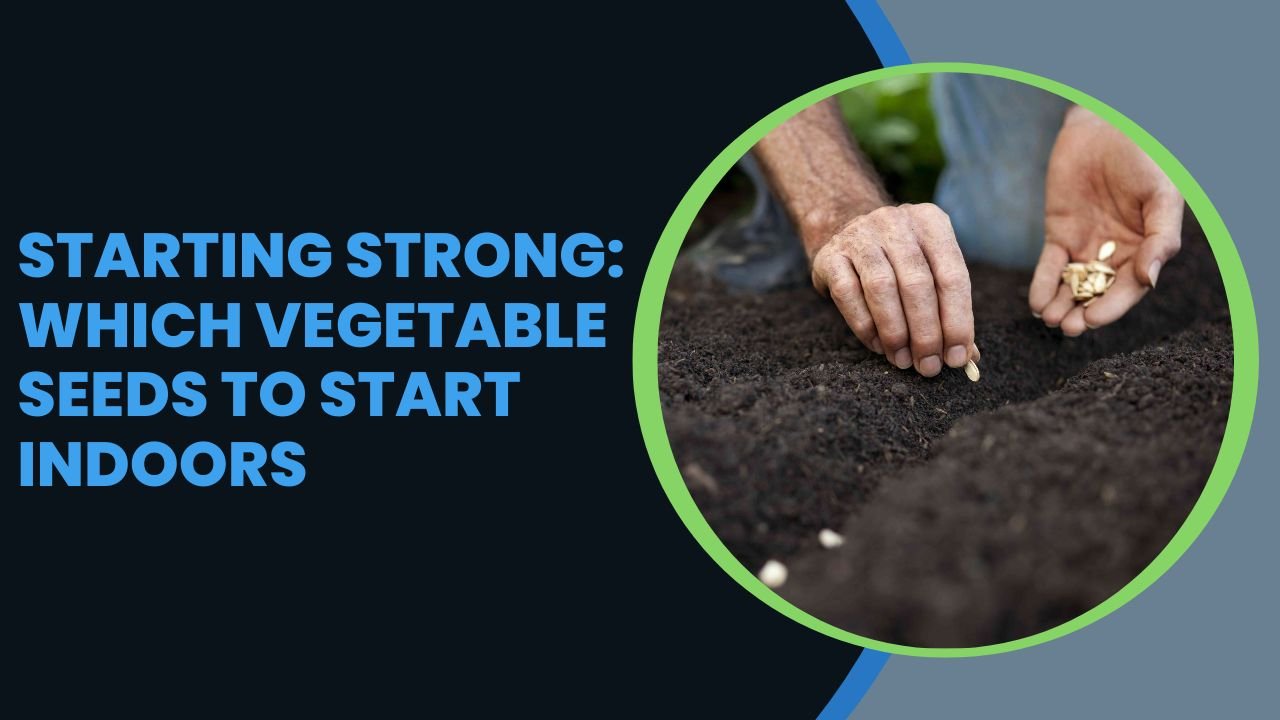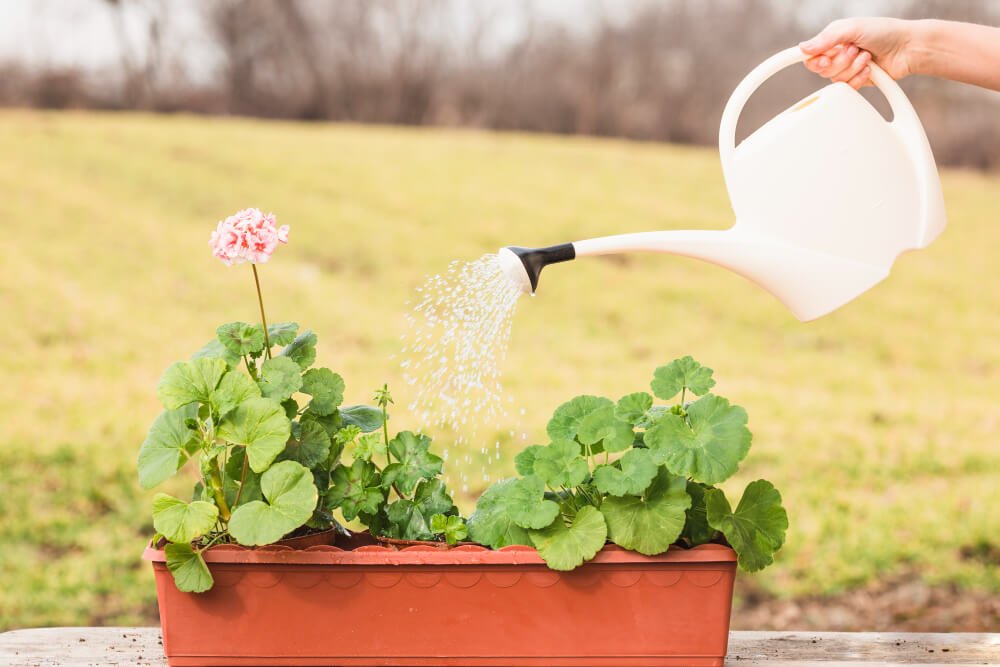
Are you excited about growing your own vegetables but unsure of where to start? Starting vegetable seeds indoors is a great way to kickstart your garden and ensure a strong and healthy crop.
In this article, we will explore the benefits of indoor seed starting, guide you through the process, and provide valuable tips to help you achieve gardening success. So, let’s dive in and discover which vegetable seeds you should start indoors!
Benefits of Starting Vegetable Seeds Indoors
Starting vegetable seeds indoors offers several advantages. Firstly, it allows you to select from a wider variety of vegetable seeds, including heirloom and unique varieties that may not be available as seedlings at your local nursery.
Moreover, you have control over the entire growth process, from seed to harvest, enabling you to use organic and sustainable practices.
Indoor seed starting also protects your plants from adverse weather conditions, pests, and diseases that can hinder outdoor growth.
Additionally, it saves you money as seed packets are more affordable than purchasing fully grown seedlings. By starting your seeds indoors, you gain the satisfaction of nurturing and watching your plants grow from the very beginning.
Choosing the Right Vegetable Seeds
When it comes to choosing vegetable seeds for indoor starting, consider the following factors:
Planting Zones and Frost Dates
Select seeds that are suitable for your specific planting zone and take into account the average last frost date in your area. This information will help you determine the appropriate time to start your seeds indoors.
Growth Requirements
Different vegetable plants have varying requirements for light, temperature, and soil conditions. Research the specific needs of each plant to ensure optimal growth and health.
Space Availability
Consider the space available in your indoor setup. Some plants, like sprawling tomatoes or cucumbers, may require more room, while others can thrive in compact containers.
Read Also: Pre-Planting Prep: Soaking Vegetable Seeds for Optimal Results
Factors to Consider for Indoor Seed Starting
Indoor seed starting requires attention to detail and a few essential factors to ensure success:
Timing
Start your seeds indoors at the appropriate time, considering the recommended indoor starting date, last frost date, and the plant’s growth rate. Some plants, like peppers and tomatoes, require an extended indoor growing period.
Light
Light is crucial for seed germination and early plant growth. Provide sufficient light by placing your seedlings near a bright window or using grow lights for optimal results.
Temperature
Maintain an optimal temperature for seed germination and growth. Most vegetable seeds require temperatures between 65°F and 75°F (18°C to 24°C). Use a heating mat or adjustable thermostat to regulate temperature if needed.
Humidity and Air Circulation
Seedlings thrive in a moderately humid environment. Use a humidity dome or cover your seed trays with plastic wrap to retain moisture. Additionally, ensure proper air circulation by gently blowing a fan near the seedlings.
Read Also: Shedding Light on Germination: Which Vegetable Seeds Need Light?
Preparing the Indoor Seed Starting Environment

Before planting your vegetable seeds, create a suitable environment for their growth. Follow these steps to prepare your indoor seed starting area:
Clean and Sterilize
Clean and sterilize your seed starting containers, trays, and tools to prevent the spread of diseases and harmful pathogens. Use a solution of one part bleach to nine parts water for sterilization.
Choose Quality Soil
Select a high-quality seed starting mix or create your own by combining peat moss, vermiculite, and perlite. Ensure the soil is well-draining and sterile to promote healthy seedling development.
Set Up a Planting Station
Designate an area with adequate light and space for your seed starting operation. This can be a windowsill, a dedicated table with grow lights, or a greenhouse setup. Arrange your containers, soil, and tools conveniently.
Seed Starting Containers and Soil
Choosing the right containers and soil for your seeds is crucial for their successful germination and growth:
Containers
Use seed trays, peat pots, or individual containers made from biodegradable materials. These options allow for easy transplanting without disturbing the delicate root system.
Soil
Fill your containers with the seed starting mix, leaving a quarter-inch space at the top for watering. Avoid using garden soil, as it may contain weed seeds and pathogens harmful to young seedlings.
Read Also: Exploring Cross-Pollination: The Journey of Heirloom Seeds
Planting the Seeds
Now comes the exciting part: planting your vegetable seeds! Follow these steps for successful seed planting:
Seed Depth and Spacing
Read the seed packet instructions to determine the ideal planting depth and spacing for your vegetable seeds. As a general rule, plant seeds at a depth twice their size.
Labeling
Label each container with the name of the vegetable and the date of planting. This will help you keep track of the progress and identify the plants once they start growing.
Watering
Moisten the soil gently using a spray bottle or a watering can with a fine spout. Ensure the soil is evenly moist but not waterlogged. Maintain consistent moisture throughout the germination and seedling stages.
Germination
Cover your containers with plastic wrap or place them in a humidity dome to create a mini greenhouse effect. This promotes moisture retention and accelerates seed germination. Remove the cover once seedlings emerge.
Read Also: Maximizing Growth: Do Vegetable Seeds Grow Through Mulch?
Providing Adequate Light and Temperature
Once your seeds germinate, it’s crucial to provide them with the right amount of light and temperature:
Light
Place your seedlings in a location with ample light. South-facing windowsills are ideal, as they receive maximum sunlight. If natural light is insufficient, supplement it with fluorescent or LED grow lights positioned a few inches above the seedlings.
Temperature
Maintain a consistent temperature range for healthy growth. Most vegetable seedlings prefer temperatures between 60°F and 75°F (15°C to 24°C) during the day and slightly cooler temperatures at night.
Watering and Fertilizing

Proper watering and fertilization are vital for robust seedling growth:
Watering
Water your seedlings as needed, ensuring the soil is moist but not waterlogged. Use a gentle watering technique to prevent disturbing the fragile roots. Avoid overhead watering, as it can lead to disease and fungal issues.
Fertilizing
Once the seedlings develop their first set of true leaves, start fertilizing with a diluted liquid fertilizer. Follow the instructions on the fertilizer package for the correct dilution ratio. Apply the fertilizer every two weeks or as recommended for optimal nutrition.
Read Also: Will Heirloom Seeds Reproduce? Unraveling the Mystery of Seed Saving
Caring for Seedlings
As your seedlings continue to grow, they require regular care and attention:
Thinning
If multiple seedlings sprout in a single container, thin them out to allow proper spacing and prevent overcrowding. Snip off the weaker seedlings at soil level, ensuring only the healthiest ones remain.
Pruning
Pinch or snip off the tips of the seedlings once they develop several sets of true leaves. This encourages bushier growth and prevents leggy, weak stems.
Hardening Off
Before transplanting your seedlings outdoors, gradually acclimate them to the outdoor environment. Start by placing them outside for a few hours each day, gradually increasing the duration over a week. This process, known as hardening off, helps the seedlings adjust to outdoor conditions.
Read Also: Planting Organic Herb Seeds: Enhancing Flavor and Health in Your Garden
Transplanting Seedlings
When the seedlings have grown strong and the outdoor temperatures are suitable, it’s time to transplant them into the garden:
Soil Preparation
Prepare the garden bed by removing weeds and loosening the soil. Amend the soil with compost or organic matter to improve its fertility and drainage.
Digging Holes
Dig holes in the garden bed that are slightly larger than the root balls of your seedlings. Space the holes according to the recommended plant spacing.
Transplanting Technique
Gently remove the seedlings from their containers, taking care not to damage the roots. Place each seedling in a hole and fill it with soil, firming it gently around the base. Water thoroughly to settle the soil.
Read Also: Burpee Organic Seeds: Your Go-To for Successful Gardening
Common Issues and Troubleshooting
While starting vegetable seeds indoors can be rewarding, it’s important to be aware of potential challenges and how to overcome them:
Damping Off
Damping off is a common fungal disease that affects seedlings, causing them to wilt and collapse. To prevent damping off, use sterile soil, avoid overwatering, provide good air circulation, and maintain proper spacing between seedlings.
Leggy Seedlings
Leggy seedlings occur when plants stretch and become weak due to insufficient light. To prevent legginess, provide adequate light intensity and proximity to the seedlings.
Insufficient Watering
Underwatering can lead to stunted growth and weak plants, while overwatering can cause root rot and fungal diseases. Strike a balance by monitoring the moisture levels in the soil and adjusting your watering accordingly.
Hardening Off and Outdoor Transplanting
Before permanently moving your seedlings outdoors, it’s crucial to harden them off gradually. Follow these steps:
Gradual Exposure
Start by placing the seedlings outdoors in a sheltered spot for a few hours each day, gradually increasing the exposure time over a week or two. Protect them from strong winds and direct sunlight initially.
Outdoor Transplanting
Once your seedlings have been hardened off, and all risk of frost has passed, transplant them into the garden following the same technique mentioned earlier.
- Read Also: Organic Seeds for Hydroponic Gardening: A Green Thumb’s Choice
- Read Also: Discover the Beauty of Heirloom Seeds for Container Gardening
- Read Also: The Ultimate Guide to Vegetable Seeds for Container Gardening
- Read Also: Fast-Growing Delights: Discovering Quick-Growing Vegetable Seeds
Conclusion
Starting vegetable seeds indoors opens up a world of possibilities for home gardeners. It allows you to grow a wide variety of vegetables, enjoy an extended harvest season, and exercise control over the entire growing process.
By choosing the right seeds, providing the necessary conditions, and caring for your seedlings diligently, you can establish a strong foundation for a bountiful vegetable garden.
So, why wait? Get your hands dirty, start your vegetable seeds indoors, and witness the magic of nature unfold in your own home.
